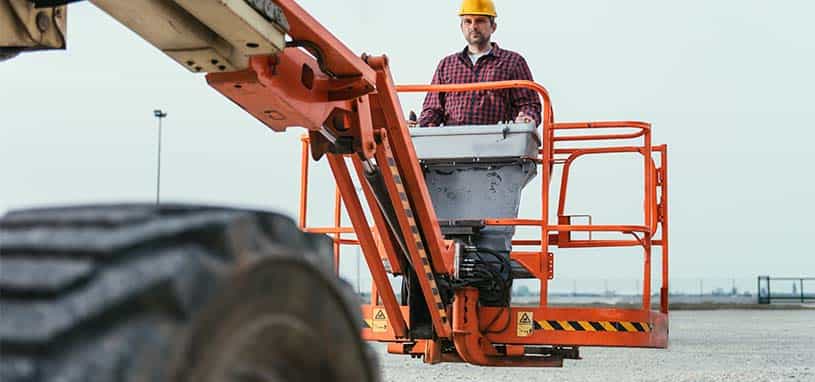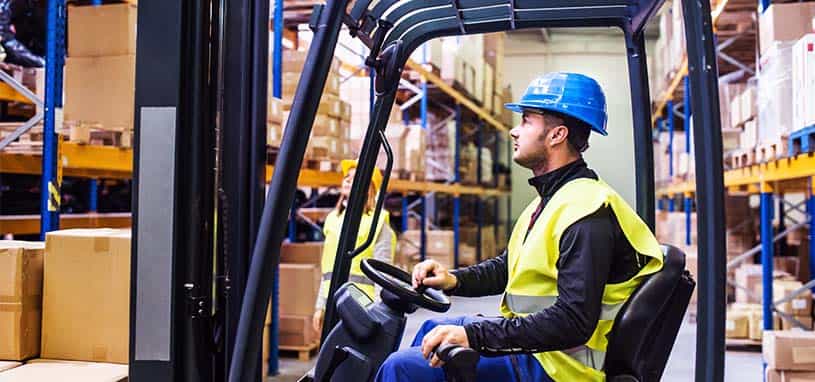How to avoid injuries when loading and unloading pallets
A workplace accident can have a dramatic effect on both workers and businesses, so it really pays to be proactive about promoting workplace health and safety.
As an employer, it’s your duty to ensure the working environment you provide is as safe and risk-free as is reasonably practicable. This includes ensuring that your staff adopt safe systems of working with goods while loading and unloading pallets.
Plain Pallets is committed to bringing you safe and manageable ways to work with pallets. For more tips and tricks for staying safe in the workplace, get in touch with our friendly team.
Injuries from loading and unloading pallets
If your work involves the manual loading of objects using pallets, it’s important to ensure you aren’t forced to frequently adopt awkward postures through bending, twisting and reaching. These activities can cause debilitating injuries to the shoulder, lower back and knees. This can occur:
- Gradually through wear and tear over time with repetition
- Suddenly when a person is lifting heavy objects, particularly in awkward postures
Either way, injuries are an unfortunate outcome you can avoid by ensuring you have safe work systems in place.
Scissor lifts and pallet rings

When it comes to loading and unloading pallets, a scissor lift with a pallet ring turntable is a great solution that can boost a business’s efficiency and productivity, while reducing the risk of injury to workers.
- The scissor lift allows the pallet level to be adjusted so that the handling of objects is done at a safe and convenient waist height for each level of the pallet.
- The pallet turntable keeps the pallet load point as close as possible to the operator, preventing them from having to stretch and reach across a pallet.
This also saves them from having to walk around a pallet whilst loading and unloading, thus considerably reducing the risk of tripping while carrying loads.
Safety skirts
Mechanisms like scissor lifts can create hazardous shearing or crushing spaces. When used in conjunction with scissor lifts, safety skirts help to prevent serious injuries.
- Safety skirts provide a physical barrier between people and moving machinery.
- This prevents operators from getting hands, clothing, or feet accidentally caught in the scissor lift's pinch points.
Safety skirts can also help to prevent loads from being crushed or damaged as the table is lowered, and help to protect the scissor lift mechanism from contaminants including dust, dirt, water, and foreign objects.
Vacuum lifters
Vacuum lifters reduce the force required to handle an item and can minimise any awkward postures to pick up objects from the bottom, top and centre of a pallet.
- The most common products to be lifted using vacuum lifters are boxes, bags and flat objects.
Please note, while vacuum lifters reduce risks of manual handling, they do not eliminate them.
Safe spaces
It is recommended that pallets should be located at least a metre from the place the objects are to be moved to or from the pallet. This encourages operators to turn and step with the object they are carrying, reducing the likelihood of twisting and reaching movements that can injure the back.
Handling items above shoulder height

Handling items above shoulder height considerably increases the risk of injuries. If workers load or unload pallets with items that are above shoulder height, consider lowering the maximum height of the pallet by:
- Reducing the layers of product stacked on pallets
- Ensuring suppliers do not stack their pallets as high
- Using low-profile lifters
- Providing workers with a platform to stand on
- Recessing the adjustable scissor lifter below floor level
The rule of thumb is to never let someone handle something overhead for a considerable amount of time. If this is happening often in your workplace, you need to take steps to address it.
Additional safety precautions
Here are some additional safety precautions that all workplaces should adhere to:
- Always ensure that the appropriate load-shifting equipment is used to remove pallet from lifters when they are full.
- Don’t overload equipment such as scissor lifts. It is vital to follow recommended maximum weight ratings.
- Implement a traffic management system for load-shifting equipment and pedestrians to prevent vehicles or people coming into contact with a lift or operator.
- Develop and implement maintenance procedures that ensure all equipment is used, inspected and maintained in accordance with the manufacturer’s instructions.
Training
Ensure that all employees who use equipment or work in proximity to it are trained in its safe operation. All employees must understand the hazards and risks involved in manual handling, why risk controls are required, and what your requirements for the use of these controls.
Visit the Workplace Victoria to learn more about the safe loading and unloading of pallets in your workplace.
Contact Plain Pallets for all your pallet needs. We stock a wide range of wooden, plastic and steel pallets. We specialise in used pallets, which are cheaper and better for the environment, and we deliver across Victoria.
Get a quote online, or speak to our sales manager, Matt Troy on 03 9545 7344.
Must Read
Plain Pallets on 29 April 2014
How to Get Greater Mileage out of Your Pallets
Do your pallets go the distance? If not, you may be losing money through replacement costs and damaged goods. Get the most out of your pallets ...
Read morePlain Pallets on 11 March 2014
Plain Pallets Display the Future of Sustainability
Pallets are always useful. See the many ways old pallets can be reused. Who knows, maybe your next house or business will have some great pallet furniture! ...
Read more